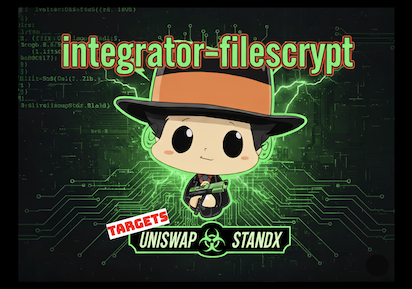On June 18, 2025, Canada’s Parliament held the first reading of Bill C‑8, formally titled An Act respecting cyber security, amending the Telecommunications Act and making consequential amendments to other Acts (https://www.parl.ca/DocumentViewer/en/45-1/bill/C-8/first-reading). This marks a decisive pivot in how Canada addresses cybersecurity, shifting from a reactive posture to a proactive, compliance‑driven model—one with direct implications for software supply chain security.
What Bill C‑8 Introduces
1. Expanded Government Authority Under Telecommunications Act
Amendments empower the Governor in Council and Industry Minister to issue binding directions to telecom operators—ranging from technical mandates to behavioural requirements—to secure Canada’s telecommunications systems. Failure to comply invites administrative monetary penalties. This reflects a clear intent: the telecom backbone must adhere to government‑mandated standards.
2. Establishment of the Critical Cyber Systems Protection Act (CCSPA)
The second component of Bill C‑8 introduces the Critical Cyber Systems Protection Act, creating a formal regulatory regime for entities deemed “designated operators” in vital sectors such as finance, energy, telecommunications, transportation, and nuclear. The legislation imposes clear and binding obligations, including:
- The development and maintenance of a “cybersecurity program” (s.9) tailored to each operator’s critical systems
- Requirements to “identify and manage any supply-chain and third-party risks” (s.9(2)(d))
- Immediate “reporting of cybersecurity incidents” that could impact critical operations (s.15)
- Adherence to mandatory directions issued by federal regulators to mitigate cyber threats (s.17–19)
With its first reading now complete, Bill C‑8 builds directly on the legislative foundation set by its predecessor, Bill C‑26—signalling the government’s continued urgency to fortify national cyber resilience through enforceable standards and oversight.
What This Means for Software Supply Chain Security
Bill C‑8 places a strong emphasis on protecting the integrity of critical cyber systems by addressing risks within the supply chain. The proposed legislation requires designated operators to “establish and implement a cybersecurity program in respect of their critical cyber systems” and to “identify and manage any supply-chain and third-party risks” (Bill C‑8, s.9(2)(d)).
There are direct implications for software supply chain security:
- Visibility & Inventory: Organizations must maintain an “inventory of all critical cyber systems” (s.9(2)(b)), which in practice means mapping out software components, including indirect and transitive dependencies.
- Risk Assessment: Companies are obligated to “identify and manage any risks that could affect the cybersecurity of those systems” (s.9(2)(c)), which extends to open-source libraries, container images, proprietary codebases, and SaaS integrations.
- Third-Party Due Diligence: The mandate to manage third-party risks compels organizations to evaluate their vendors and suppliers—“including any person who designs, manufactures or supplies them” (s.9(2)(d))—for security vulnerabilities and update practices.
- Incident Reporting Obligations: Under section 15, designated operators must “report a cybersecurity incident without delay” to the appropriate regulator if it has or is likely to have a material impact on the system, which encompasses breaches or exposures stemming from compromised software components.
Tooling & Compliance Steps Companies Must Take
To align with the mandates outlined in Bill C‑8 and the CCSPA, designated operators—and other firms operating in or adjacent to critical sectors—will need to deploy a set of purpose-built tools that enable compliance, resilience, and real-time visibility. Key capabilities include:
- SBOM Generation — Tools that automatically generate Software Bills of Materials (SBOMs), offering comprehensive visibility into all components and their nested dependencies. This is foundational for both risk assessment and third-party oversight.
- Vulnerability Scanning — Integrated solutions that embed within CI/CD workflows to surface and block vulnerable packages before they reach production. Safety CLI offers enterprise-grade, Bill C‑8–aligned scanning to ensure teams catch issues early—without slowing down development.
- Supply Chain Risk Monitoring — Always-on systems for monitoring threat intelligence and vulnerability disclosures across open-source ecosystems and third-party software. Safety Firewall provides proactive package-level detection, shielding organizations from emerging supply chain attacks in real time.
- Incident Response Tooling — Platforms that enable structured incident capture, forensic traceability, and automated reporting to regulators—key for meeting CCSPA’s immediate notification requirements.
- Audit & Compliance Infrastructure — Frameworks for internal controls, historical traceability, and demonstrable compliance—including automated change tracking, access logs, and reporting dashboards—to withstand audits and regulator scrutiny.
These capabilities aren't just technical niceties—they’re fast becoming baseline requirements for legal and operational continuity under Canada’s emerging cybersecurity regime.
The Strategic Stakes
Bill C‑8 signals a shift: cybersecurity is now a systems-level obligation across infrastructure domains—not just an IT concern. The government is turning compliance with software supply chain hygiene into a legal duty, subject to oversight and penalties. Companies that stay ahead by operationalizing SBOMs, scanning pipelines, and third‑party due diligence will not only ensure compliance—they'll gain a competitive edge through demonstrable trustworthiness.
Bottom line: Bill C‑8’s first reading confirms Canada’s commitment to modernizing its cybersecurity framework. Once passed, it will compel organizations—especially those involved in critical infrastructure—to implement robust software supply chain controls. That means SBOMs, proactive vulnerability scanning, and incident reporting, all sustained by strong tooling and compliance practices.





.png)




